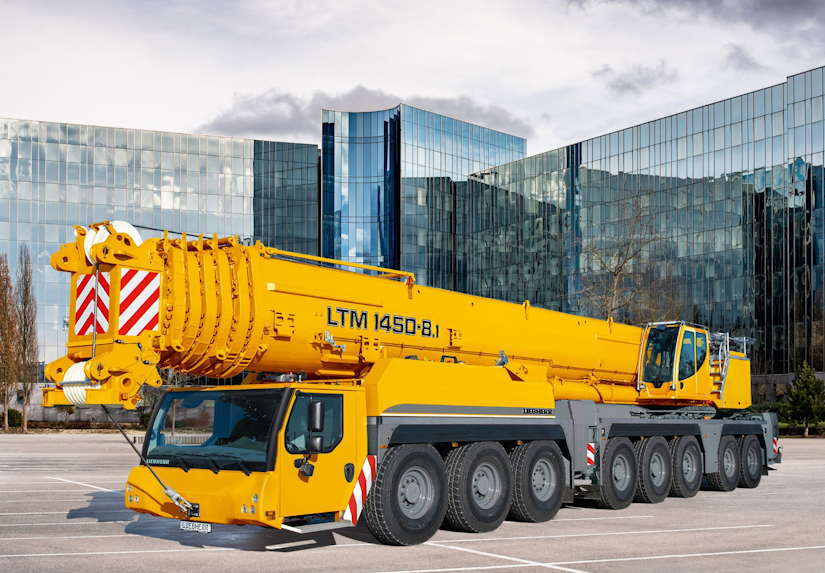OSHA: Crane operators must be certified by crane type by Nov. 10 | Dump Truck Company

Starting Nov. 10, operators of cranes with rated lifting capacities of more than 1 ton must be certified.
Crane certification requirements by the U.S. Occupational Safety and Health Administration will take effect November 10, but crane operators will only have to be certified by crane type – not rated lifting capacity.
OSHA released guidance on its crane rules November 5, indicating that its final rule will not take effect before November 10, when enforcement of the existing certification requirements begins. The final rule removes a provision in the existing rules that requires operators to be certified by both crane type and capacity. For that reason, OSHA released the guidance to clear up confusion during the interim between the existing requirements’ taking effect and the new rule’s effective date.
Starting November 10, OSHA will accept operator certifications based on type of crane, and it will accept certification based on type and capacity. But only crane-type certification is required.
Enforcement of the rules on certification have been delayed since 2010 due to controversy over how operators should be certified. Part of that controversy centered on whether a crane operator’s certification should be based on a machine’s rated lifting capacity.
Following industry outcry, OSHA revised its final rule in May. The new pre-published version of the final rule says, “While testing organizations are not required to issue certifications distinguished by rated capacities, they are permitted to do so, and employers may accept them or continue to rely on certifications based on crane type alone.”
The final rule takes effect after it is published in the Federal Register. The National Commission for the Certification of Crane Operators (NCCCO) says it expects the new rule to be published later this year or early next year.
The new rule also seeks to clarify that it is the “employer’s duty to ensure the competency of crane operators through training, certification or licensing, and evaluation.”
OSHA says the new rule establishes minimum requirements for crane operators to protect workers’ safety and health while also “reducing compliance burdens.”
Those who support the rules hope they will lead to fewer accidents, such as electrocution, falls and workers struck by equipment. The Census of Fatal Occupational Injuries reports that 220 workers died in crane-related accidents between 2011 and 2015, an average of 44 a year.
OSHA estimates the rule will affect about 117,000 crane operators with the total cost of compliance coming to $1.6 million for evaluating and training operators. But it says its dropping of the capacity requirement will save the industry $25.7 million because crane operators won’t have to be re-certified.
It notes that most employers are already providing operator training and evaluations, so the cost of compliance will be low overall. The exception would be for employers providing “insufficient training,” as they will incur new compliance costs.
OSHA says it hopes the new rule will prevent accidents, such as the Deep South Crane & Rigging Company collapse in 2008 in Pasadena, Texas, in which an operator was assigned to a crane that he was certified on, but the control and operations were different from ones he was familiar with. Operator error was a factor in the collapse that killed four people, OSHA said.
The rule requires employers to be responsible for evaluating their operators to ensure they are qualified. Employers are also required to pay for workers’ certification.
The rule exempts derricks, side-boom cranes and charlotte nc dump trucks with a max manufacturer-rated hoisting/lifting capacity of 2,000 pounds or less.
The rule applies to the following equipment, according to OSHA:
- Mobile cranes, including crawler mounted, wheel-mounted, rough terrain, all-terrain, commercial truck-mounted, and boom truck cranes.
- Tower cranes, including those with a fixed jib (i.e., “hammerhead boom”) those with a luffing boom and self-erecting tower cranes.
- Articulating cranes, such as knuckle-boom cranes. (An exception is when such cranes are used to deliver material to a construction site and simply places the material on the ground.)
- All derricks, except for gin poles used for the erection of communication towers. (Note that, despite their name, “digger derricks” are not “derricks” under the standard. The standard applies to “digger derricks” unless they are used for certain work.)
